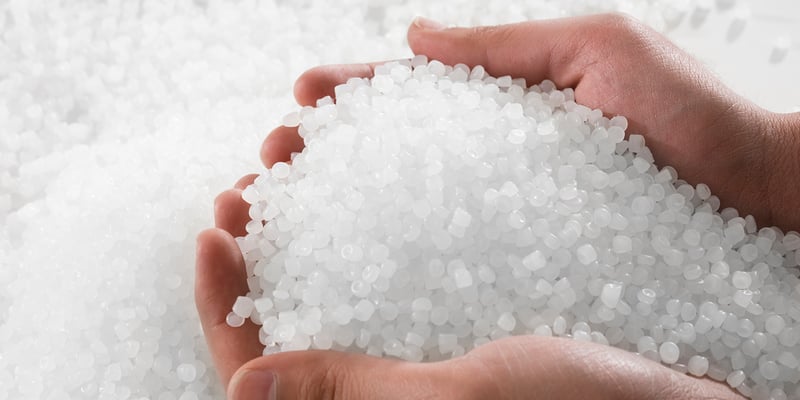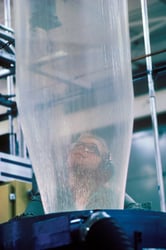
When there are a lot of processors on your production floor AND a lot of processes, a one-size-fits-all purge compound can be very appealing.
It may be the dream to have a compound that cleans all resins at any temperature, with as little time and effort as possible and in some instances you may be able to do just that.
I often refer to these unfilled (i.e. no glass), mechanical (work by abrasion only) purge compounds as a “universal purge compound.”
A “universal” unfilled-mechanical purge can follow behind almost any resin, immediately after a production run and is easily displaced. There is no need to change processing temps and there is NO soak time required. You can usually go in and out from one resin or color to the next within a matter of minutes. They have low residue properties, and they work extremely well for most commodity resins for injection molding applications.
A “universal” purge can be used for hot runner and die cleaning since it has NO glass it is safe to go through gates (depending on clearance. They will offer an extremely broad processing temperature range usually ranging from 340F to 680F. Therefore, they are useful in most processing situations. They are also safe to leave inside the machine (with heats turned off) over night or over the weekend for sealing. This adds the benefits of reduced scrap and minimal issues at start-up.
So yes, there are many purge compounds that do tick all these boxes and can be used universally across a broad range of resins and temperatures. However, the idea of having one universal purge compound is an idealistic one, and there are many instances where choosing a more specific/dedicated compound for a process will be the better option.
The table below summarizes just a few examples of specific processing conditions OR purging concerns that would require a more specific approach than that what would be achieved by a “universal” purge:
|
Process Type/Problem |
Requirements/Recommendation |
|
High-temperature resins i.e. PEEK, Ultem, Other super-engineering resins (Above 680F)
|
If you are processing high temperature resins it is vital to have a purge that offers increased thermal stability combined with a cleaning ability at VERY high temperatures. i.e. it should NOT burn at 700F or have too reduced a viscosity (i.e. water-like). At elevated temperatures, a “universal” mechanical purge would lose integrity and cleaning power and may catch fire. |
|
Low-temperature resins i.e. PVC (Below 340F)
|
At temperatures below 340F a more “universal” compound may not achieve full melt. In this instance, a low temperature purge can offer better flow properties at the lower temperature range, and in some cases i.e. PVC, an added blowing agent can be highly beneficial to increase cleaning ability. |
|
Severe Contamination/Black Specks |
This is when reactive (rather than preventative) purging is required, and something more aggressive than a “Universal” purge is needed. Here a glass-filled mechanical purge compound would work extremely well as it offers superior cleaning and more stubborn deposit removal from the screw and barrel. In some instances where contamination is too severe, you may use the glass filled compound to assist in pulling the screw. When you need to remove contamination from the die (or hot runner systems) you would not be able to use a glass filled purge and here a chemical purge compound would be required. For a chemical purge, increased heats AND a soak time of between 10-20 minutes is needed to get the best results. |
|
Hard to clean Die – i.e. Sheet/Film
|
A chemical purge compound is also beneficial when cleaning an extrusion system with a hard to clean die. i.e. sheet dies are known for being difficult to clean at the edges. As a chemical purge works by heat and containment (not dependent upon pressure) it can get into those hard to reach areas, and clean well in the low-pressure areas (that a mechanical compound would not get to)
|
These are just a few examples of more specific purging needs. Others include high-cavitational molds which would require a purge with better flow, blown-film production where you may desire a purge that can hold a bubble. high-density or low-density resins where the base resin of the purge needs to match that of the resin for better compatibility when cleaning.
The list is endless and although the idea of a universal compound is great (and in some cases may be practical), selecting a dedicated grade for each process/resin can often save you more time and money than using a “universal” compound for everything.
Ready to reduce your production downtime to protect your profits? Learn more about how purging compounds and process efficiency work in tandem.

Kiran Raza is an Asaclean Purging Expert & Technical Sales Representative. She's worked in the plastics industry for nearly 20 years and has expertise In Bio-Medical Materials, Polymer Processing, and Materials Testing.







Comments